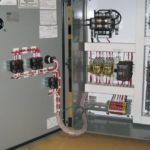 Developing a car engine is really a highly complicated task that calls for numerous research. Studies are required to know the behavior in the supplies under heavy heat and pressure circumstances. Studies are necessary to understand the movement from the fluids although the engine for optimization. And of course, research are needed to understand how much variation to permit throughout the manufacturing procedure.
Developing a car engine is really a highly complicated task that calls for numerous research. Studies are required to know the behavior in the supplies under heavy heat and pressure circumstances. Studies are necessary to understand the movement from the fluids although the engine for optimization. And of course, research are needed to understand how much variation to permit throughout the manufacturing procedure.
The automotive industry is one of the top industries within the use of tolerance analysis during the design and style phase. Automotive firms realize that tolerance stackups are demands early inside the design process to adequately handle variations that may occurring during manufacturing. However they also understand that manual and even Excel based stackups will not be enough for the demands of their design and style teams.
Geometric Dimensioning and Tolerancing or GD&T has been in use for many years and is playing an increasing role in the automotive industry. Whether based on the USA’s ASME standard or the international ISO standard, automotive corporations are using GD&T to help adequately communicate the intent on the design and style to the manufacturing facilities.
Many organizations have final vehicle assembly plants located in countries and regions throughout the world. The costs of shipping out of compliance parts to an assembly plant on the other side with the world can be very high. To solve this problem, automotive manufacturers are using automated software to pull information directly from the CAD systems. Such software reads the GD&T from the CAD models, such as CETOL, CATIA and Pro/e, and increases the efficiency and effectiveness in the design and style engineer.
GD&T and CETOL type tolerance studies are performed in all areas of automotive manufacturing. Body in White and sub-assemblies also benefit from the better communication and more detailed information available through the usage of both GD&T and tolerance evaluation. The connectors of the electrical system are very sensitive to manufacturing variations and benefit from these types of studies.
Randomization based studies, such as those used in a Monte Carlo primarily based evaluation, lack the precision necessary to correctly predict the behavior of an overall assembly. In order for tolerance analysis to be accurate, it needs to be performed as a statistical tolerance evaluation.
In summary, to correctly predict the variations which will occur when constructing complicated systems in the automotive industry, proper use of Geometric Dimensioning and Tolerancing is necessary. The use of GD&T and tolerance analysis can decrease the costs and time to market in the very competitive global automotive market.









